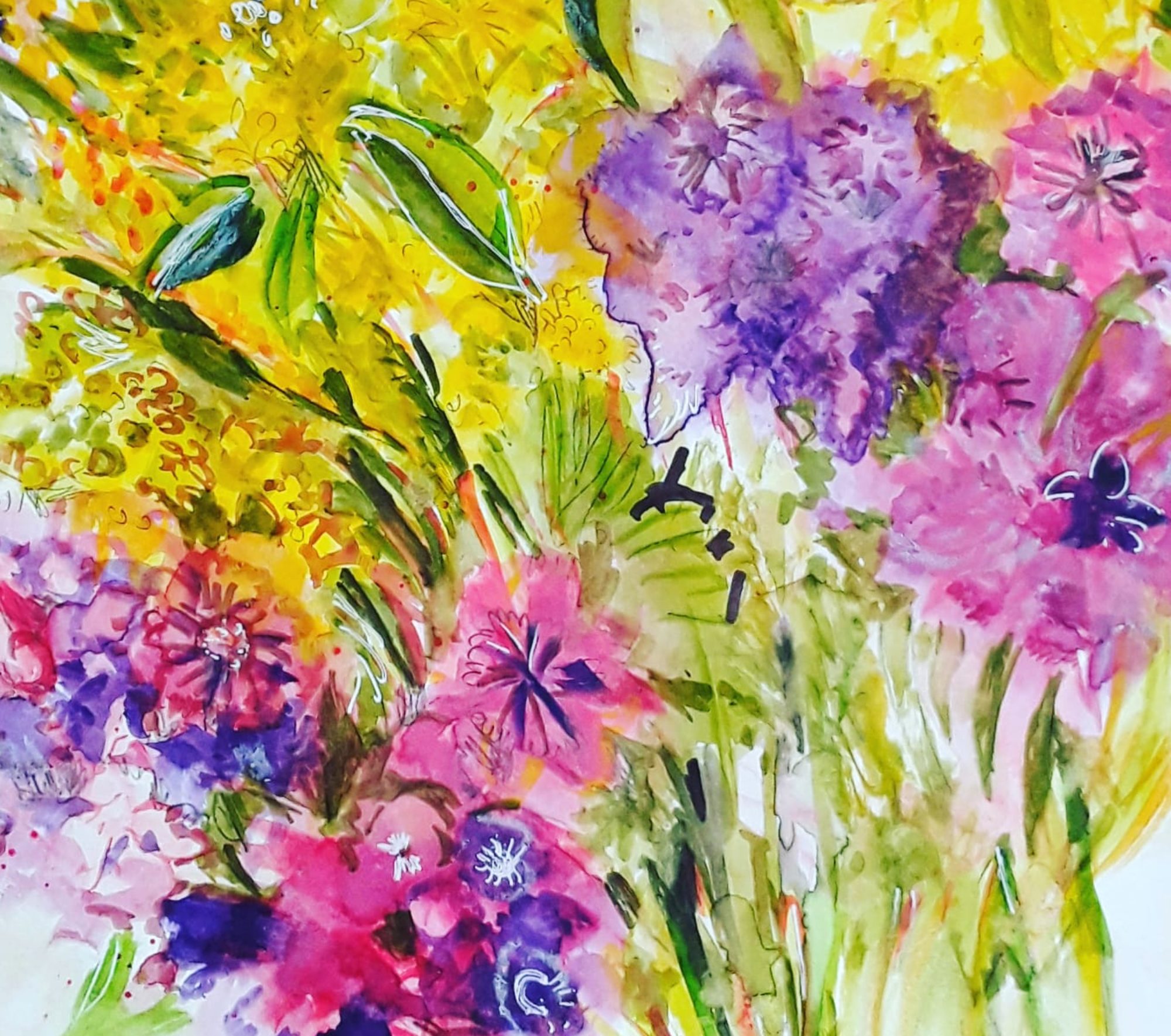
Good morning everyone. This is an acrylic abstract I did recently, featuring a restricted palette of purple and yellow. With a bit of yellow ochre thrown in, plus black and white, if I remember correctly. So, today I’d like to think about how colours influence mood in abstract painting. Incidentally, I never set out trying to choose a mood or atmosphere at the start. Because I paint instinctively and ‘choose ‘ the colours and shapes unconsciously. And then analyse what I have created afterwards!
Probably I turned to making art on this occasion to help me with a low mood. As I’ve mentioned before, for me (and lots of other people, no doubt) art is therapy. It soothes my soul and very rarely do I not feel better after an hour or two of painting.
Shades of Purple and Yellow

Actually, I bought some artist’s grade cadmium yellow a few weeks ago, and I’ve never looked back! Because the pigment is nice and strong, unlike the student grade acrylic I had been using. So, I can use it freely and make a really definite mark. And, to me, the colour signifies sunshine and happy days – the vitality of life. In fact, I use it to create a cheerful atmosphere as in ‘Sunshiny Day’ here .
And, what about the purple? Well, I spent some time thinking about why I so love the colour. Usually straight out of the tube, which is rare for me. Anyway, I’ve come to the realisation that I use it to conjure up the richness and intricate variety of life. And how we should take advantage of that and live life to the full. (Apologies for the darker colours here – I found it almost impossible to get a good reproduction of the true colour purple in this painting and in the next one!)
Family

Finally, I’d like to feature another purple and yellow abstract which shows my great love for these two beautiful colours. Now, if I hadn’t given it a title revealing my thoughts on the subject, what would you sense about the mood of this painting? Hopefully something cheering and heartwarming. But, who knows?
All my original artworks are available at reasonable prices. I sell them unframed and if you are interested, you could go to the Contact Me page and send me an email.
















































































